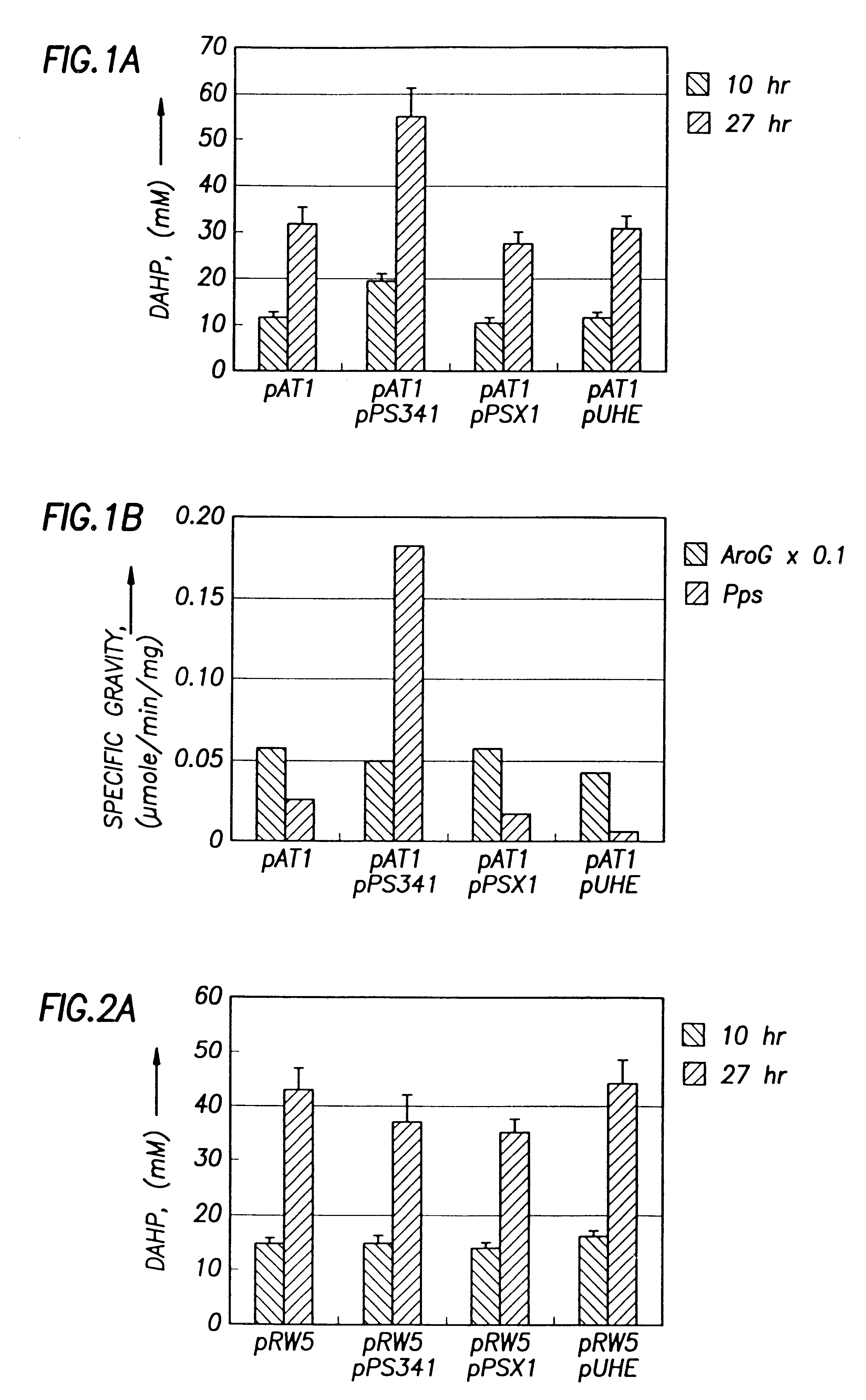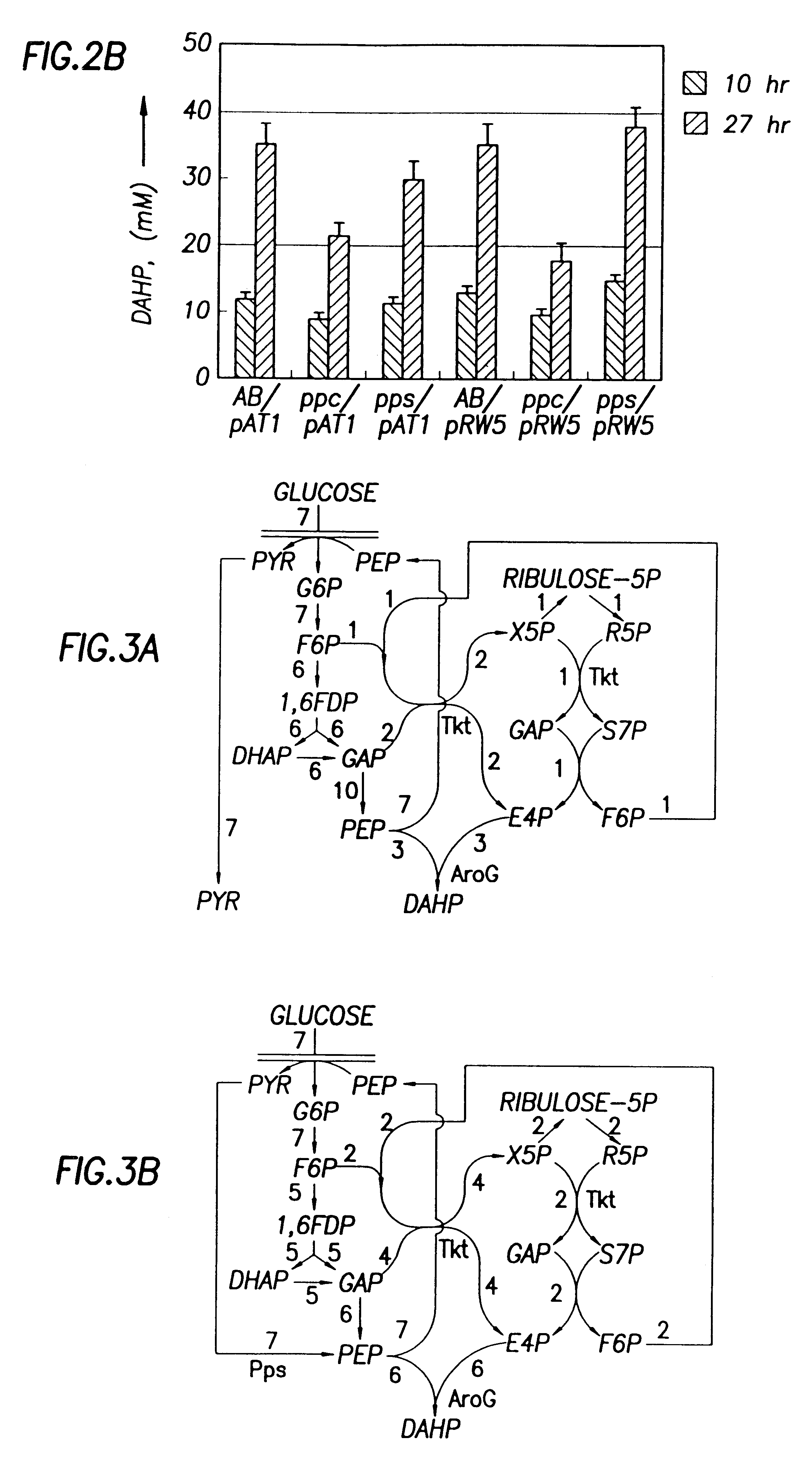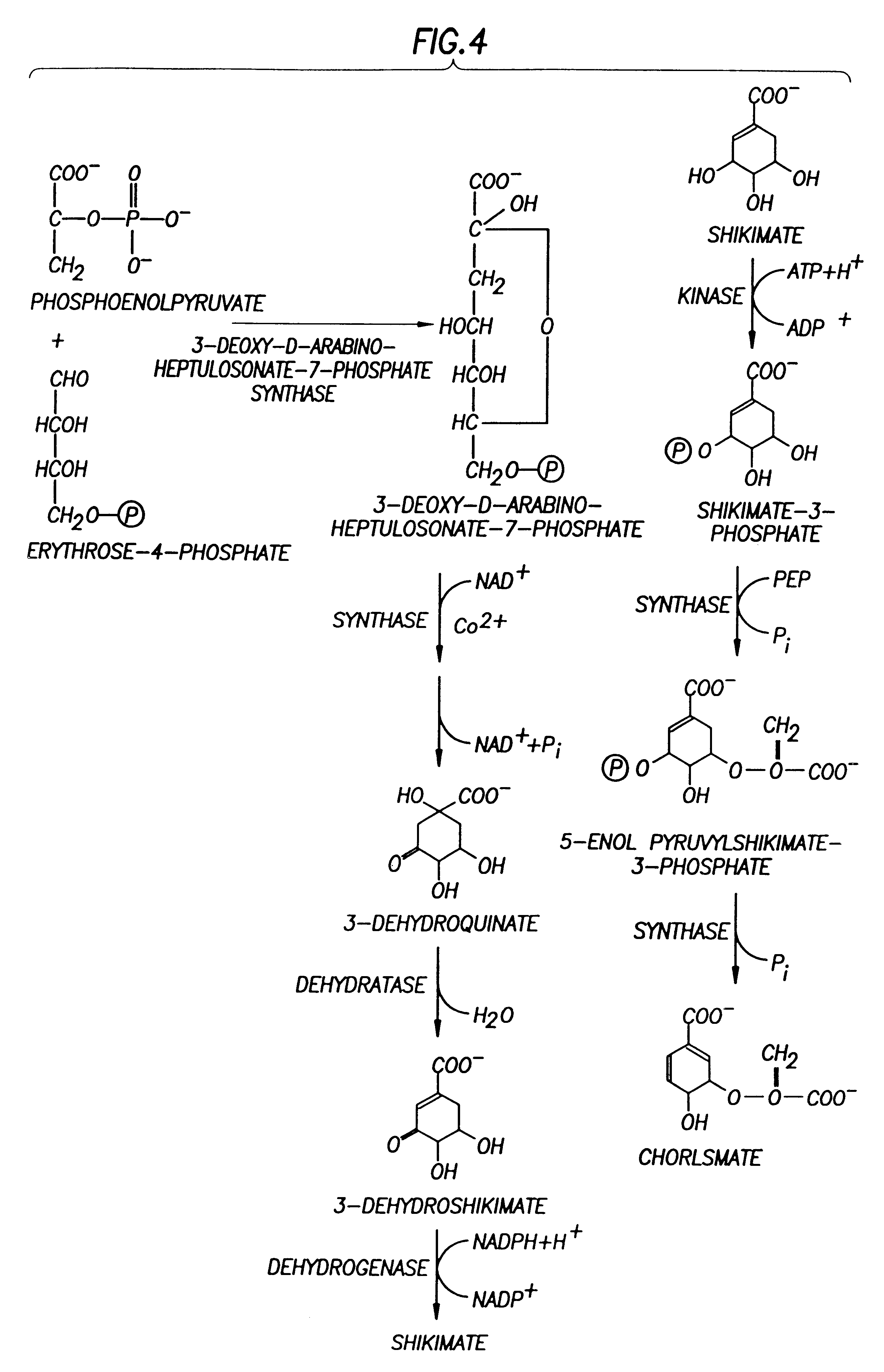Microorganisms and methods for overproduction of DAHP by cloned PPS gene
a technology of pps gene and microorganisms, which is applied in the field of biosynthetic production of organic chemical compounds, can solve the problems of modest success and attempts to fall far below the theoretical yield, and achieve the effects of small success, increased dahp levels and yields, and reduced dahp production
- Summary
- Abstract
- Description
- Claims
- Application Information
AI Technical Summary
Benefits of technology
Problems solved by technology
Method used
Image
Examples
example 1
Production of DAHP
This example demonstrates that the E. Coli AB2847 is unable to utilize DAHP, and accumulates DAHP in the medium if DAHP synthase is overexpressed. This strain was used as a host for detecting the flux committed to the aromatic pathways. Since Draths et al. (Draths, K. M., D. L. Pompliano, D. L. Conley, J. W. Frost, A. Berry, G. L. Disbrow, R. J. Staversky, and J. C. Lievense, "Biocatalytic synthesis of aromatics from D-glucose: The role of transketolase," J. Am. Chem. Soc., 1992, 114, 3956-3962) have shown a possible limitation in the production of DAHP by E4P, pATI (containing both aroG.sup.fbr and tktA) was transformed into AB2847 to eliminate the limitation of E4P. To test whether PEP supply limits DAHP production, PEP synthase (Pps) was overexpressed in AB2847 / pAT1 by transforming plasmid pPS341 into this strain. 20-70 copies of the pps gene were expressed in the host cells. As a control, pPS341 was substituted by pPS341.times.1, which encodes an inactive, but ...
example 2
As shown above, Pps overexpression improved DAHP production from glucose. We were interested to know whether the basal level of Pps expression in glucose medium contributed to the production of DAHP. Therefore, the chromosomal pps gene in strain AB2847 was knocked out. The resulting strain (JCL1362) was used as the host to repeat the above experiments. Results show that inactivation of chromosomal pps did not significantly affect the DAHP production in strains containing pRW5 or pAT1 (FIG. 2B). Therefore, the basal level of pps expression in glucose medium did not contribute to the DAHP production.
Since PEP is also converted to OAA by Ppc, the deletion of this enzyme may increase the supply of PEP. Therefore, the ppc gene on the chromosome of AB2847 was inactivated to determine whether DAHP production could be increased without Pps overexpression. This was done by transducing AB2847 with a PI lysate grown on JCL1242 ppc::Km. The resulting transductant, JCL1283 aroB ppc::Km was then ...
example 3
Production of Tryptophan
Existing technologies for the production of tryptophan utilize either naturally occurring microorganisms, mutated microorganisms, or genetically engineered microorganisms. These microorganisms include, but are not limited to Escherichia coli, Brevibacteria, Corynebacieria, and yeast. The altered pathways may include: (1) deletion of pathways branching off to phenylalanine and tyrosine; (2) deletion of pyruvate kinases (pyk); (3) deletion of PEP carboxylase (ppc), (4) deletion of phosphoglucose isomerase (pgi); (5) desensitize feed-back inhibition of enzymes in the chorismate pathway and the trp operon; (6) deletion of the repressor, trpR, and the attenuation sequence in the trp operon, (7) deletion of tryptophan degradation enzymes; (8) overexpression of the trp operon enzymes; (9) overexpression of the wild-type or feedback resistant AroF, AroG, or AroH, or any enzyme in the chorismate pathway; (10) overexpression of SerA; and (11) overexpression of TktA or ...
PUM
 Login to View More
Login to View More Abstract
Description
Claims
Application Information
 Login to View More
Login to View More - R&D
- Intellectual Property
- Life Sciences
- Materials
- Tech Scout
- Unparalleled Data Quality
- Higher Quality Content
- 60% Fewer Hallucinations
Browse by: Latest US Patents, China's latest patents, Technical Efficacy Thesaurus, Application Domain, Technology Topic, Popular Technical Reports.
© 2025 PatSnap. All rights reserved.Legal|Privacy policy|Modern Slavery Act Transparency Statement|Sitemap|About US| Contact US: help@patsnap.com



